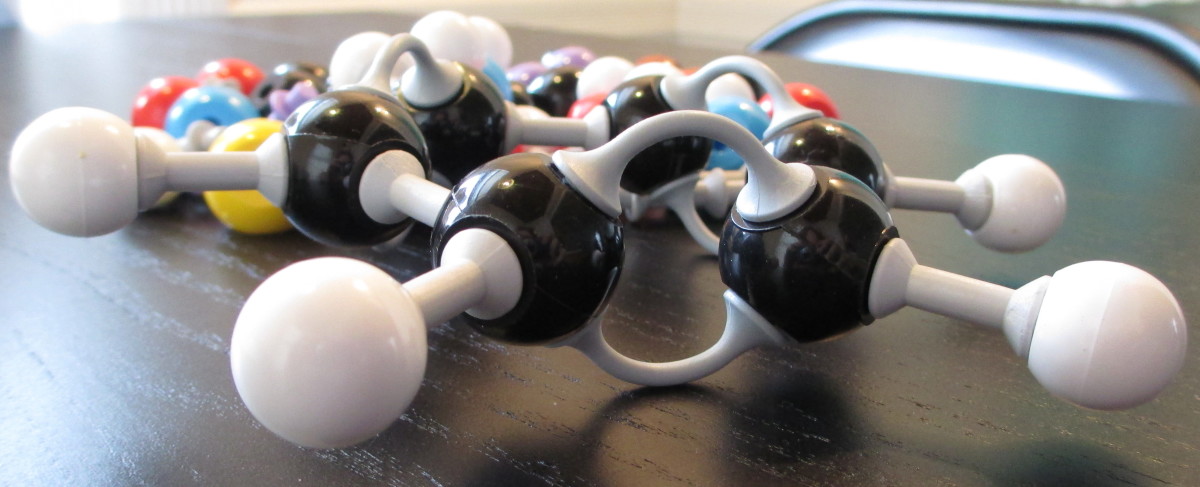A Beginner's Guide to Graphene
Where does it comes from?
If you split graphite down into ultra thing layers then you will have graphene. In fact, you have probably created graphene when using a pencil, you just wouldn't have been able to see it. Graphene is only one atom thick.
The theory of graphene and how the particles may behave has actually been around for decades. In fact their were studies relating to graphene as far back as 1947. The name graphene was first applied to the substance in 1984, but at this point it was still a theoretical substance and until recently, nobody knew how to extract it from graphite.
So Who Found It?
Two scientists, Prof Andre Geim FRS and Prof Kostya Novoselov, FRS, managed to solve this issue in one of their regular "Friday Night Experiment" sessions at Manchester University. The pair regularly took time to perform scientific experiments which weren't necessarily linked to their day jobs. In this particular session they found a way to repeatedly separate graphite segments until a they had a piece one atom thick; a piece of graphene.
Andre and Kostya first published their findings in 2003 but they were not published until 2004. At this point, the world of graphene research was set alight and mnay other parties started their own research into the characteristics and capabilities of this molecular material

What Are The Key Qualities?
- Graphene is incredibly thin. It is 1 million times thinner than a human hair.
- Graphene is conductive. In fact it is thought to be the most conductive material on Earth.
- Graphene is so thin that is described as the world's first 2D material. This is opening up new doors into other experimental fields and theories.
- Not only is it thin, but graphene is also transparent.
- The atomic structure of graphene resembles a honeycomb as the carbon atoms arrange themselves in a hexagonal lattice pattern.
- Despite being so thin, graphene is incredibly strong. It is 200 times stronger than steel.

What Can It Do?
There are lots of potential applications for graphene. Experiments show it may be able to help with water purification. It also shows great promise in the world of electronics and energy storage. This could lead to flexible phones and even further advancements in wearable technology such as smart eyewear.
Combining graphene with other materials in composite structures has already lead to several new advancements. The durability of graphene has already been introduced to tennis rackets and hockey sticks from Head and Grays. These are in use and may even be used by competitors at the Olympics. It is also likely to be introduced to cycling, skiing and Formula 1 cars in the near future.
Sport is often the first to take advantage of new discoveries like this. The sports mentioned already share other composite materials so it is no surprise they have all been quick to use new graphene based composites.
Researchers at Manchester University have also shown how adding graphene to paint could potentially eliminate the risk of rusting. This could prevent deterioration in cars, ships and other vehicles.
Unsurprisingly, there is also research going into Graphene and the potential applications within medicine. There are continually advancements in bio-medical sciences and there is a possibility that graphene could be used in sterilization and preventing the spread of disease, treatments regarding the nervous system and even contraception.
Grays Graphene Hockey Stick Range

Woah! Is That Everything?
Graphene has such an interesting resume, and it is still so young. With 100s, if not 1000s, of researchers looking into the properties and applications for graphene this list is certain to grow.
As more and more intelligent uses for graphene are discovered, we can expect to see incredibly advancements in so many industries, from sports equipment to ultra-lightweight aircrafts.
Find Out Even More...
Why Haven't I Heard About Graphene?
It is often quite easy to overlook scientific advancements. It's not very often that they hit the headlines, though the discovery of this "Miracle Material" has certainly made the news in Manchester where the ground breaking research took place.
The Friday Night Experiments have even become a tradition at Manchester and students regularly partake in Friday Experiments. Who knows what the next revolutionary discovery may be.








